WATER LEAKS AT THE COWL AREA - DIAGNOSIS AND REPAIR

Comments of water in rear floor area, water dripping on feet, water on or under carpet, or musty odor may indicate a cowl water leak. This bulletin covers the diagnosis and repair of cowl water leaks at the following locations:
(1) At Heater - A/C Module (2) At Cowl Seams (3) At Front of Dash
LOCATING AND REPAIRING LEAK
The vehicle may have to be water tested to pinpoint the specific area of water entry. Refer to Section 1 of the Fisher Body Service Manual for water testing procedures. Listed below are some specific areas that should be checked for leaks and procedures to repair them.
HEATER - A/C MODULE -------------------- 1. Check the heater - A/C module mounting bolts to insure that they are tight.
o If not, the windshield lower chrome molding must be removed to access the upper module mounting bolts. o Tighten the bolts to 2-4 N-m (18-35 in. lb.) in the sequence shown in Figure 1.
2. Check for proper application of sealer around the heater A/C module.
o Sealer should be applied only to the top and sides of the module flange as shown in Figure 1.
COWL SEAMS
1. Check for proper shimming of the fenders.
o Incorrect shinning will place extra stress on the cowl seam. o Loosen bolt shown in Figure 2. o If excessive gap, add shims. o Tighten bolt.
2. Check for proper number and location of spotwelds as shown in Figure 3.
o Correct as necessary.
3. Check the seam between the lower hinge pillar panel to the dash panel for sealer placement or cracking.
o Proper sealing of the cowl seam involves a thumb grade sealer applied under a flo-on sealer in the locations shown in Figures 4 and 5.
FRONT OF DASH SEALING
1. Check all holes in dash that wiring harnesses or cables pass through for sealer.
o There should be sealer over each of the areas indicated in Figure 6.
o Seal as required.
FINAL CHECK AND CLEAN-UP
1. Check for water under the carpet.
o Lift the corner of the carpet up to check for trapped water. o Check the condition of the floor pan. o Correct as necessary.
2) Check for mildew odor.
o If odor is present, replace the matting under the carpet.
o Scrub the floor pan and the back of the carpet with Lysol disinfectant or equivalent.
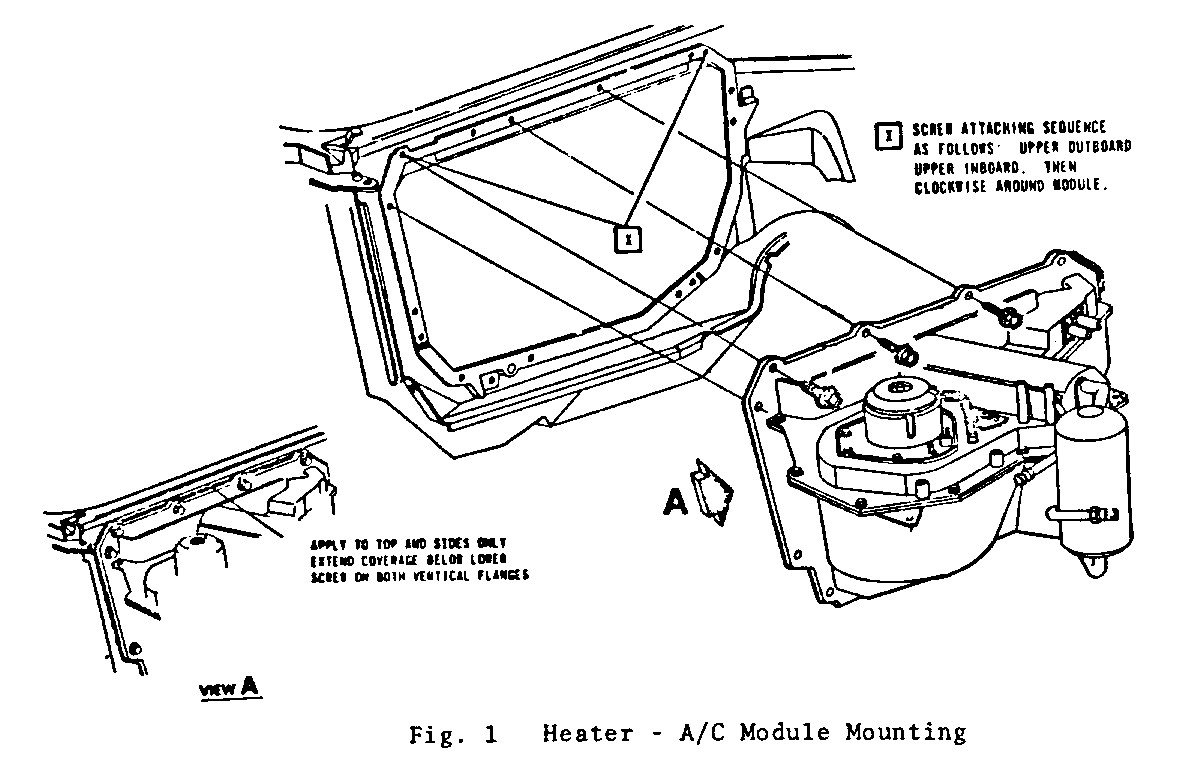
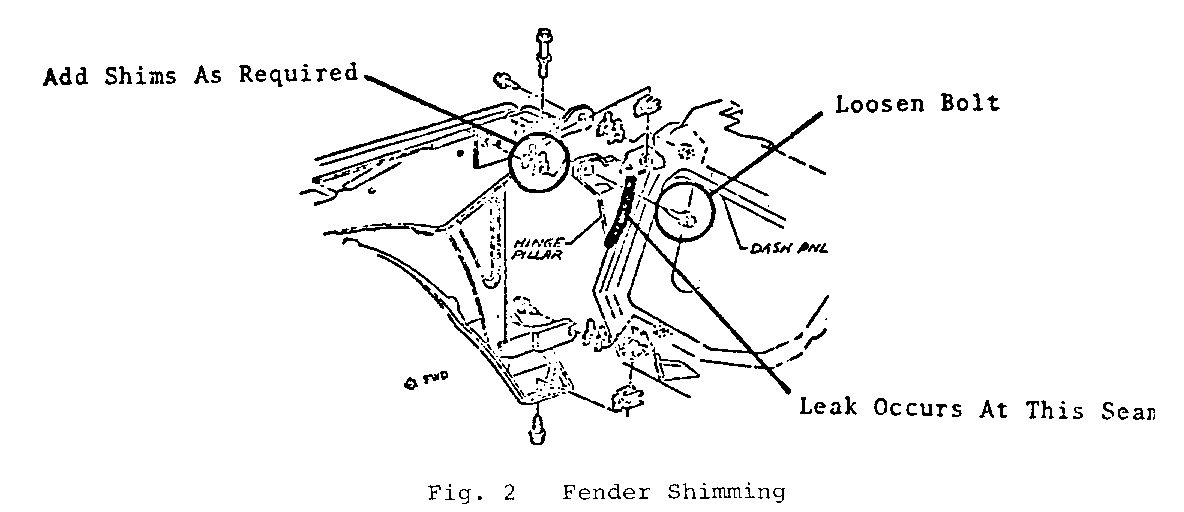
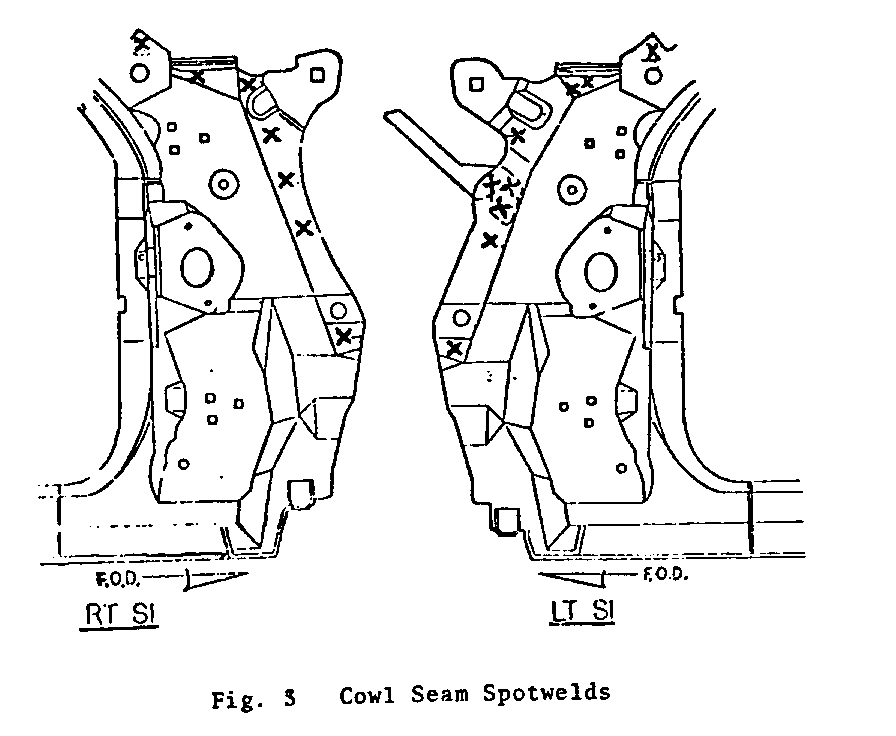
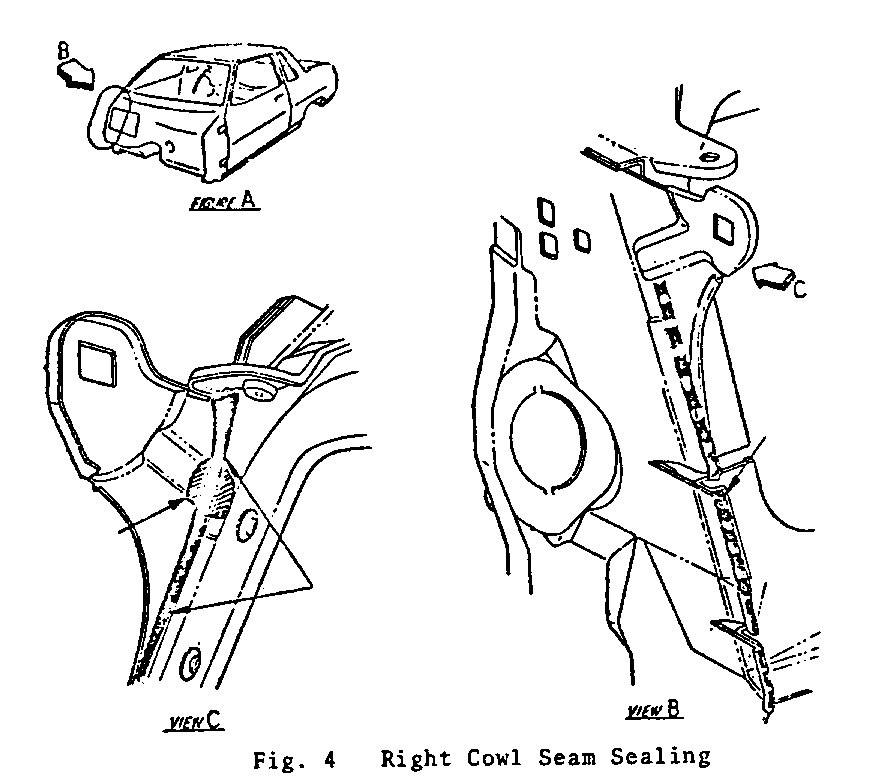
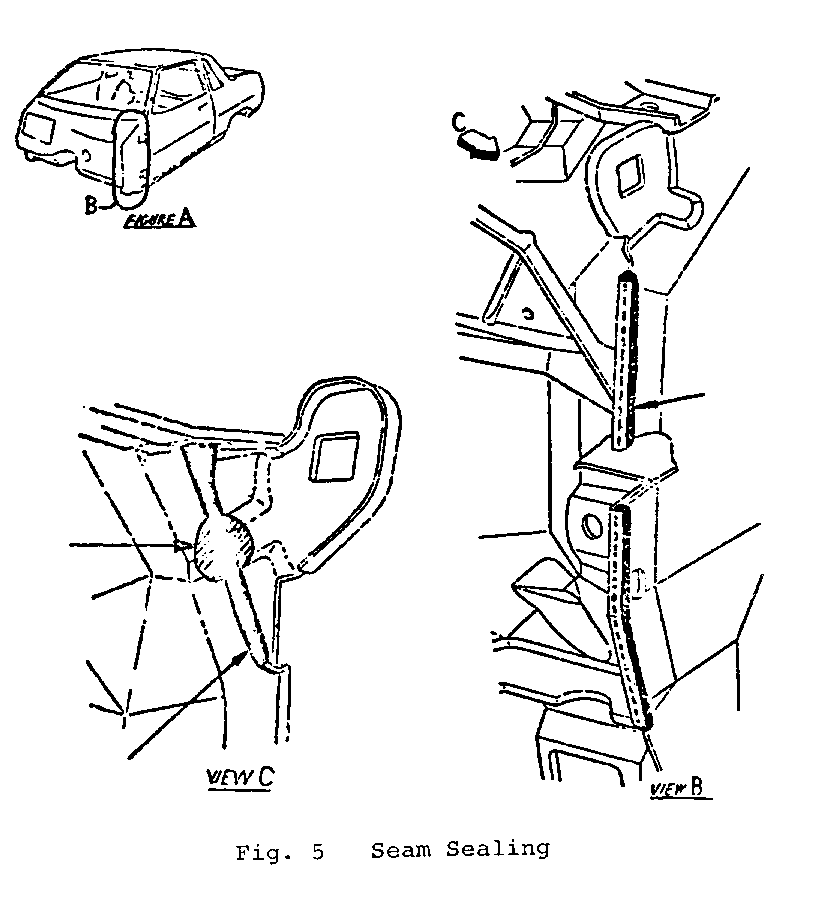
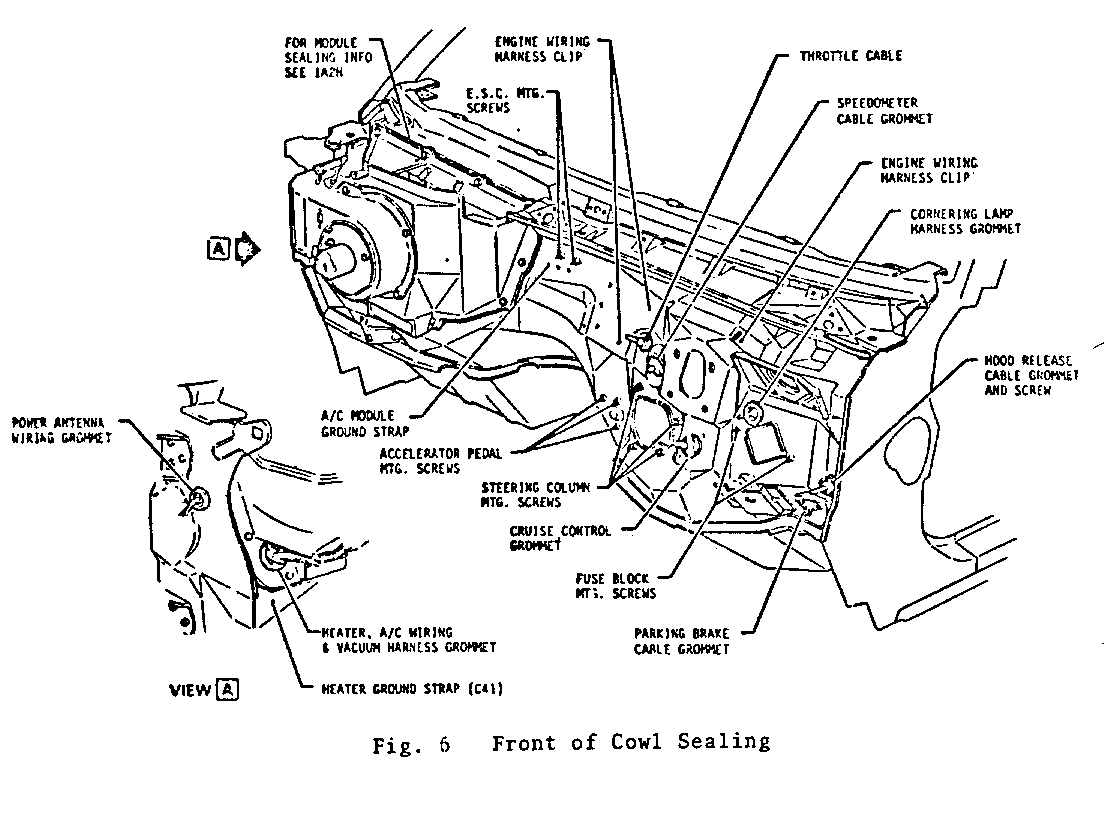
General Motors bulletins are intended for use by professional technicians, not a "do-it-yourselfer". They are written to inform those technicians of conditions that may occur on some vehicles, or to provide information that could assist in the proper service of a vehicle. Properly trained technicians have the equipment, tools, safety instructions and know-how to do a job properly and safely. If a condition is described, do not assume that the bulletin applies to your vehicle, or that your vehicle will have that condition. See a General Motors dealer servicing your brand of General Motors vehicle for information on whether your vehicle may benefit from the information.
